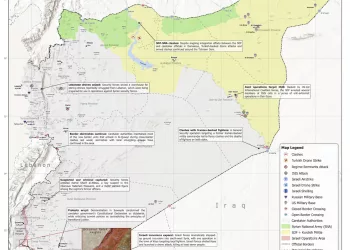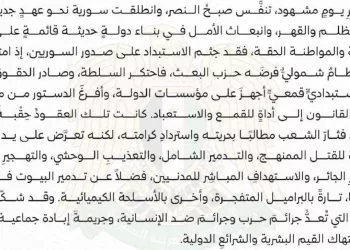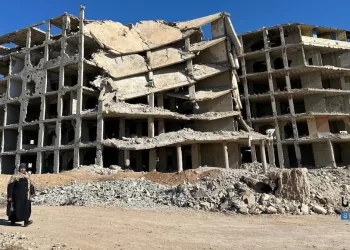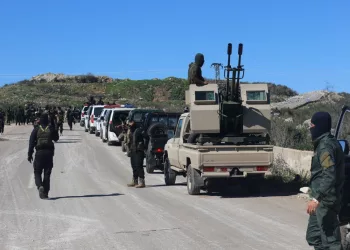On the night of 13th April, Iran’s Islamic Revolutionary Guard Corps (IRGC) launched around 300 unmanned drones and ballistic missiles in an unprecedented, large-scale attack against Israel. Iranian officials claimed the attack as retaliation for Israel’s strike on the Iranian consulate in Damascus that killed several senior IRGC commanders on 1st April. Although debate is continuing over the extent to which Iran’s attack succeeded or failed, Iran’s launch capabilities and sizable arsenal were on display during the attack.
The attack marked the first time that the IRGC has directly targeted Israeli territory from Iran. While the vast majority of the 300 or so projectiles were successfully intercepted, the huge salvo presented both a costly challenge and saturating test for Israeli air defense systems.
Syria’s role
Indicative of Syria’s centrality to Iran’s regional operations, the Syrian regime provided Iran with unobstructed access to its airspace. Damascus almost certainly knew about the Iranian attack, or at least it expected it, beforehand. The regime’s main air defense radars in Suwayda were switched off hours prior to the attack and did not turn back on until the following afternoon. Overnight, civilians in Damascus and south Syria reported seeing missile-trails in the skies, and most of the projectiles reportedly passed through Syrian airspace over either Daraa or Suwayda while en route to Israel. However, no Syrian air defense rockets were fired to bring down Iranian drones or missiles as they passed over Syria.
Also significant, however, was the fact that Russia, which has been the arbiter of Syrian airspace since 2015 and maintained deconfliction channels with Israel, neither attempted to prevent the Iranian attack nor curb Iran’s access to Syrian airspace.
Iranian-backed militias in south-west Syria meanwhile played a relatively minor role. In the hours immediately after the attacks, militias launched two missile salvos towards the Israeli-occupied Golan Heights.
Looking forward
The events of recent weeks are a stark reminder that Iran is reaping the rewards of its unchecked expansion and entrenchment over much of the region.
Tit-for-tat exchanges between Israel and Iranian-backed militias in the region, especially from the Syrian and Lebanese fronts, are expected to continue in the short-term, with the potential for further escalation between Israel and Iran a persistent reality.







